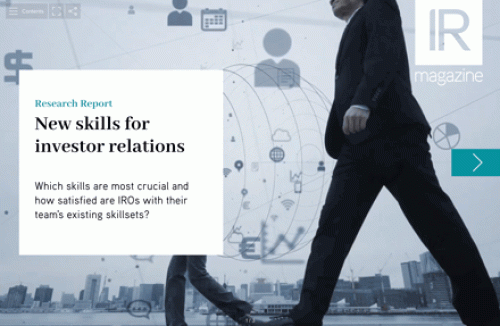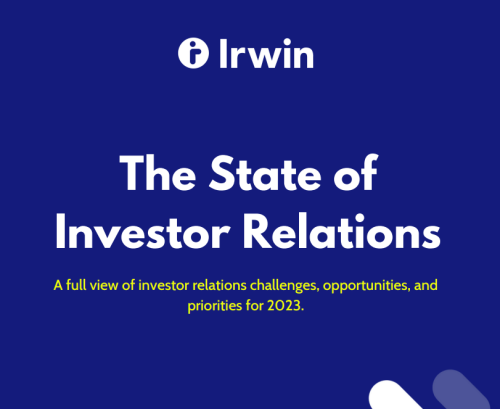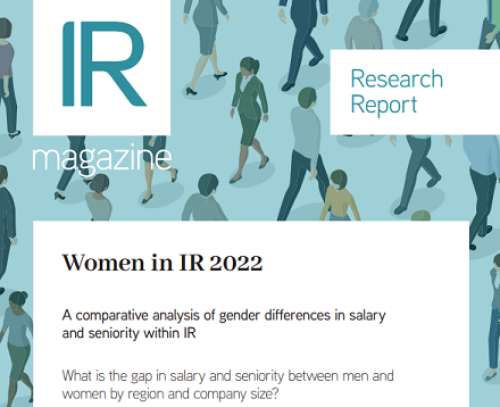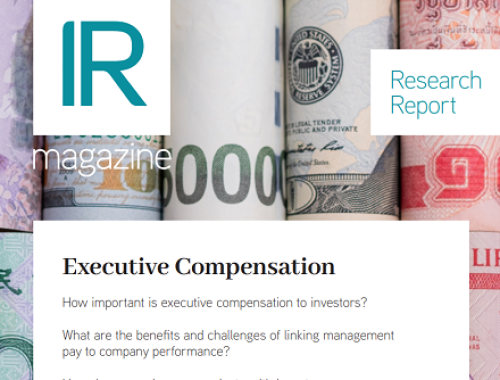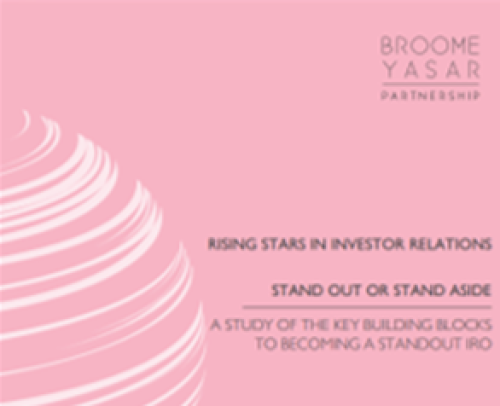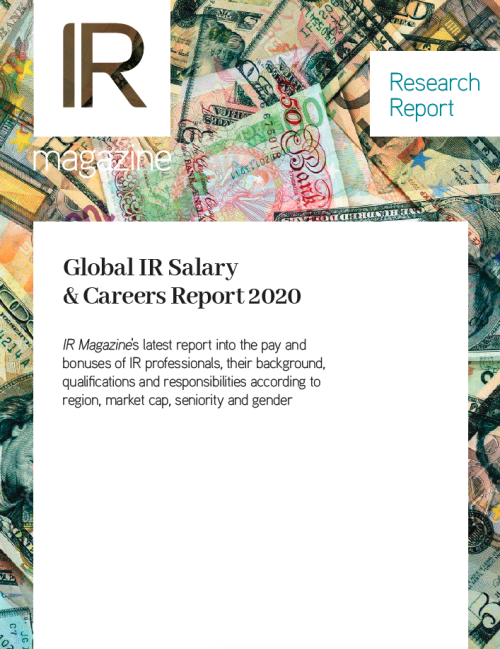An IRO has to be reactive to market pressures and trends, and two big trends that are having a dramatic impact on IR workloads today are Mifid II and ESG. But should these responsibilities command a higher salary, or is it simply part of an IRO’s job to respond to changes in investor and analyst behavior?
Mifid II has had a major impact on the economics of the sell side, its research coverage for small and mid-caps and, consequently, how the buy side seeks to engage with public companies. According to UK-based global recruitment agency Carter Murray’s investor relations trend report for 2018, Mifid II is creating regulatory pressure for IROs and forcing in-house IR teams to increase their direct engagement with the buy side. As a result, companies are looking to grow their IR teams, the research shows.
Peter McDermott is a New York-based senior client partner in corporate affairs for global organizational and executive search consulting firm Korn Ferry. He believes Mifid II provides an opportunity for IROs to impress senior management. ‘Trends such as Mifid II continue to stretch IROs in their role, which is positive for the overall function,’ he says. ‘IROs are expected to have a higher level of proven financial acumen, in addition to a creative mindset, to successfully build relationships across the leadership team and drive their future strategy.’
Korn Ferry has been monitoring IR salaries for 20 years and McDermott notes that they have increased. He believes this is down to IROs’ enhanced stature within public companies. ‘Compensation for IROs continues to increase, in my experience, which is positive news for the continued evolution of the function,’ he says. ‘Our team started measuring statistics around this in 1999, and the growth trajectory since then has been impressive. The growth areas I have seen include the coupled functions, where IR leaders have a dual role in corporate development, treasury, financial planning and analysis, or strategy. I expect compensation to continue to climb in line with the additional responsibilities asked of the IRO.’
Activism experience is in demand
ESG is another major trend and IR professionals are now having to analyze what the ESG expectations are from investors, and assess how their company meets those expectations.
A significant shift in attitude to ESG occurred back in 2006 with the establishment of the United Nations-backed Principles for Responsible Investing, which were launched at the NYSE. The number of signatories among investment institutions has grown significantly since the initiative began, from the original 100 that included CalPERs and BNP Paribas Asset Management to the more than 2,300 today.
The conversation around ESG continues to evolve, and at times IROs may feel as though they’re being asked to learn a new language, getting up to speed with the reporting frameworks of the Sustainability Accounting Standards Board, Global Reporting Initiative, Task Force on Climate-related Financial Disclosures, CDP, Climate Disclosure Standards Board, International Integrated Reporting Council and others – on top of trying to forge new relationships with ESG data providers like Sustainalytics, MSCI and ISS ESG.
One community that has noticed the power of ESG is activist investors. Last year, Jana Partners joined forces with CalSTRS to send a letter to Apple’s board, asking it to be more socially responsible. Similarly, Trian Partners and ValueAct Capital have emphasized the importance of ESG to their firms.
In an article published on IRmagazine.com last year, Melissa Sawyer and Marc Trevino, partners at law firm Sullivan & Cromwell, wrote: ‘By using an ESG platform, activists not only gain additional avenues to launch attacks, but can also distinguish their fund-raising efforts with a message that appeals to many pension funds and other asset managers. It’s no coincidence that Jana recently announced that it’s raising a new sustainability fund.’
Smooch Repovich Reynolds, managing director of IR and communications practice at global executive search consultancy ZRG Partners, has certainly seen an uptick in interest for IROs with activism and ESG experience. ‘Activism is an interesting topic: five years ago none of my clients were looking for experience in activism in the IR sector, but it’s very different now,’ she notes. ‘In the last two years alone, battletested IROs with activism experience have become a standard criterion. Clients now want that knowledge and savvy. There has been a significant rise in its importance and I don’t think that will shift back.’
A fair salary
As a broader point, some investor relations professionals may wonder whether they are being compensated fairly. As a two-way conduit between senior management and the Street, the best IROs can play a defining role in bringing investors into a company’s stock and coaching senior management on how to position their strategy.
In contrast to Korn Ferry’s 20-year study of IRO compensation, IR Magazine’s most recent Global IR Salary & Careers Report, which covers figures up to 2017, finds that globally the salaries of IROs have fallen slightly: in 2016, 46 percent of IROs earned above their respective median salary ranges, yet this dropped to 41 percent the following year.
Moreover, the number of IROs who received a bonus fell from 82 percent three years ago to 74 percent in 2017, even though there was an increase in the size of the additional payment.
Regional breakdowns in the study reveal that IROs in North America receive the highest salaries. In a further boost, more North American IROs received a bonus than those from any other region, with 88 percent accepting extras. Traditionally the US is the pacesetter for IRO salaries, not least because there is a greater focus on communicating with the investment community there.
In Europe, IR professionals witnessed the sharpest fall in global regional salaries, according to the report, with most now paid less than $75,000, and those earning more than $100,000 dropping to just 28 percent in 2017.
In Asia, meanwhile, the median salary for IROs in 2017 was down to less than $50,000, with six out of 10 survey respondents earning less than this sum. IROs in Asia also trail the rest of the world on bonuses, with both the amount of bonus and the number of people receiving one declining.
When asked about salary levels for IROs in North America, Repovich Reynolds says: ‘I think for the most part IROs are paid fairly. Let’s face it: the IRO role is dramatically different from any other function in a company and this results in its own disparity across companies and industries.’
And for those feeling that they aren’t being compensated at the level they believe they should be, Repovich Reynolds recommends that they flex their career management muscle: ‘If you look back to when times were really challenging – such as 10 years ago during the global financial crash, or even back as far as the Great Depression – what do smart people do when they are not compensated fairly for the caliber of the work they do? They put career strategies in place to make changes.’

